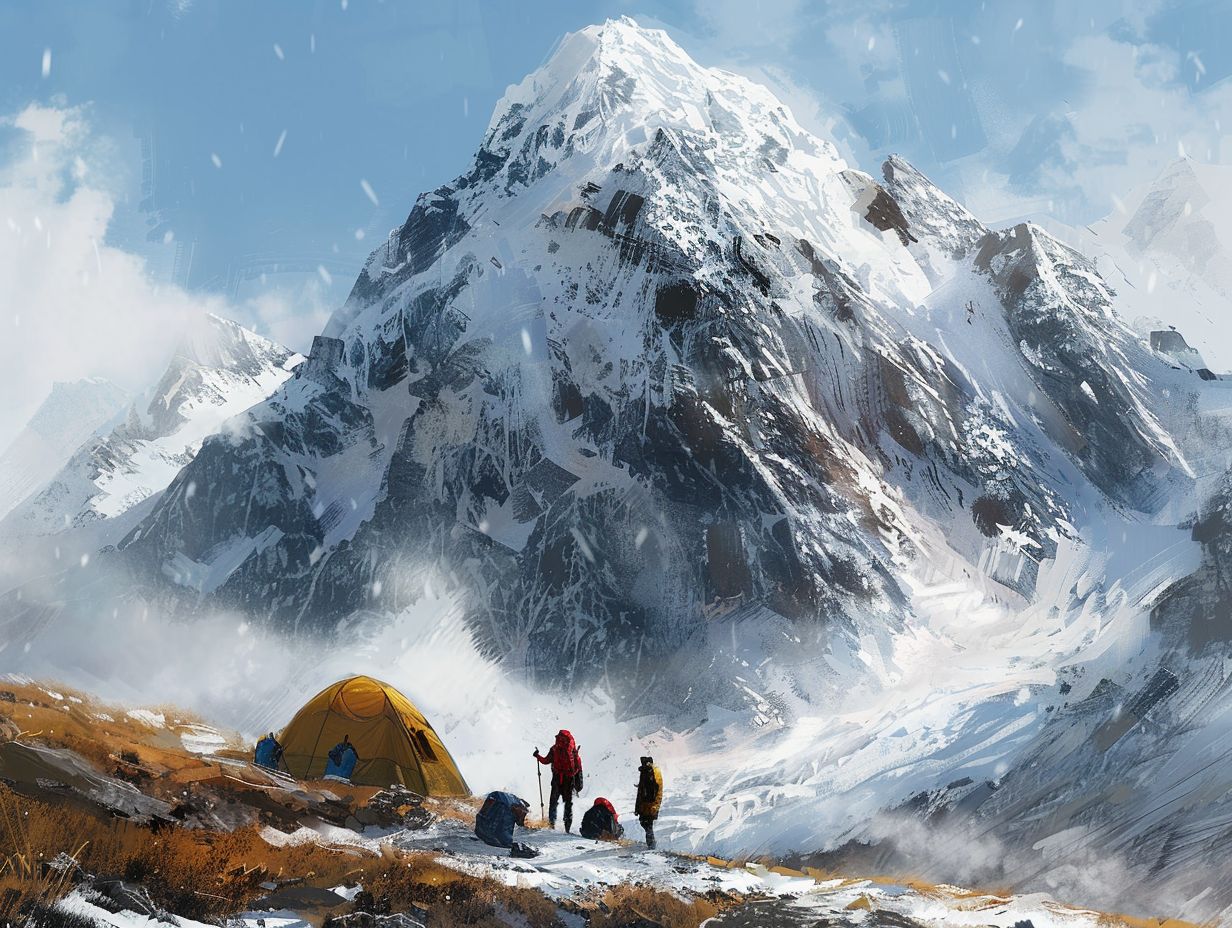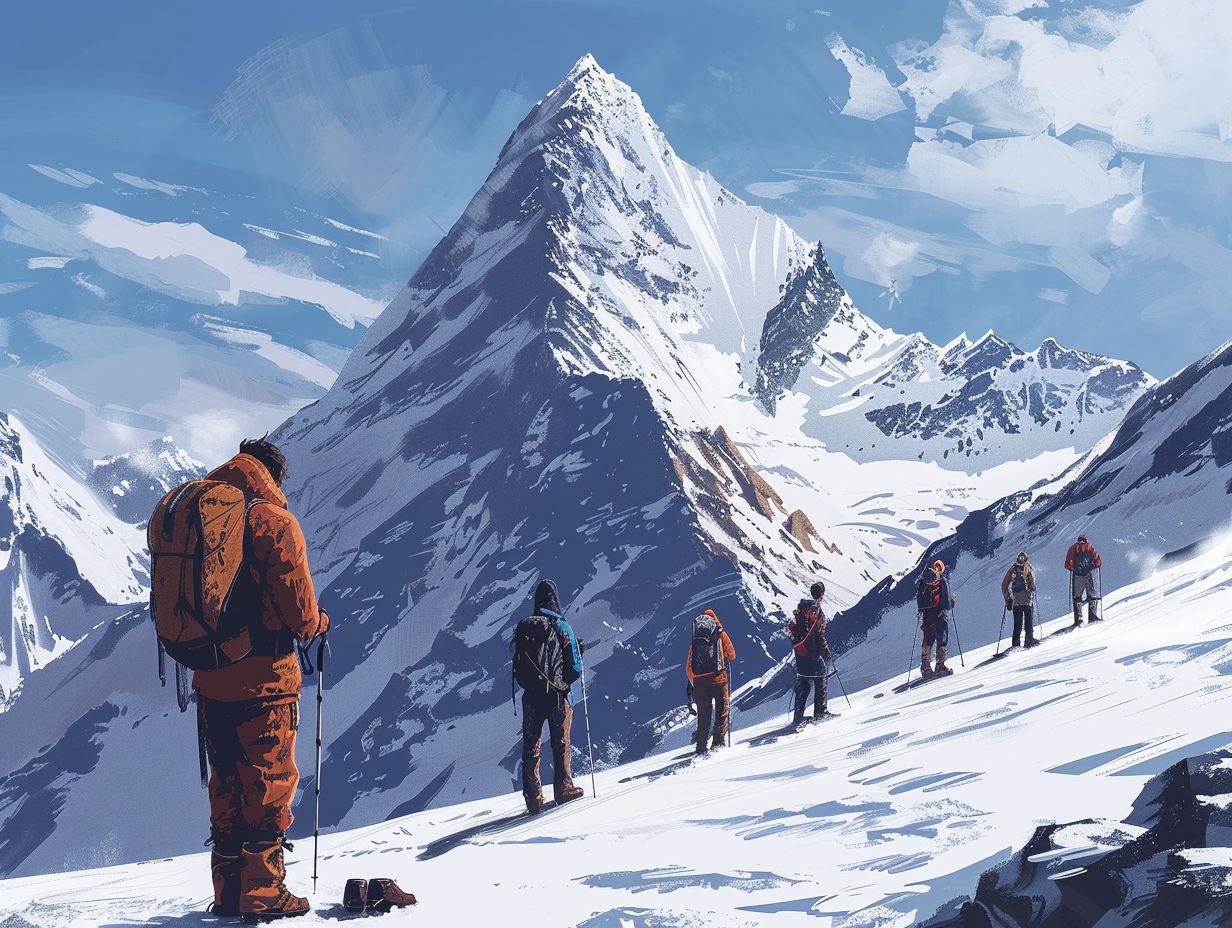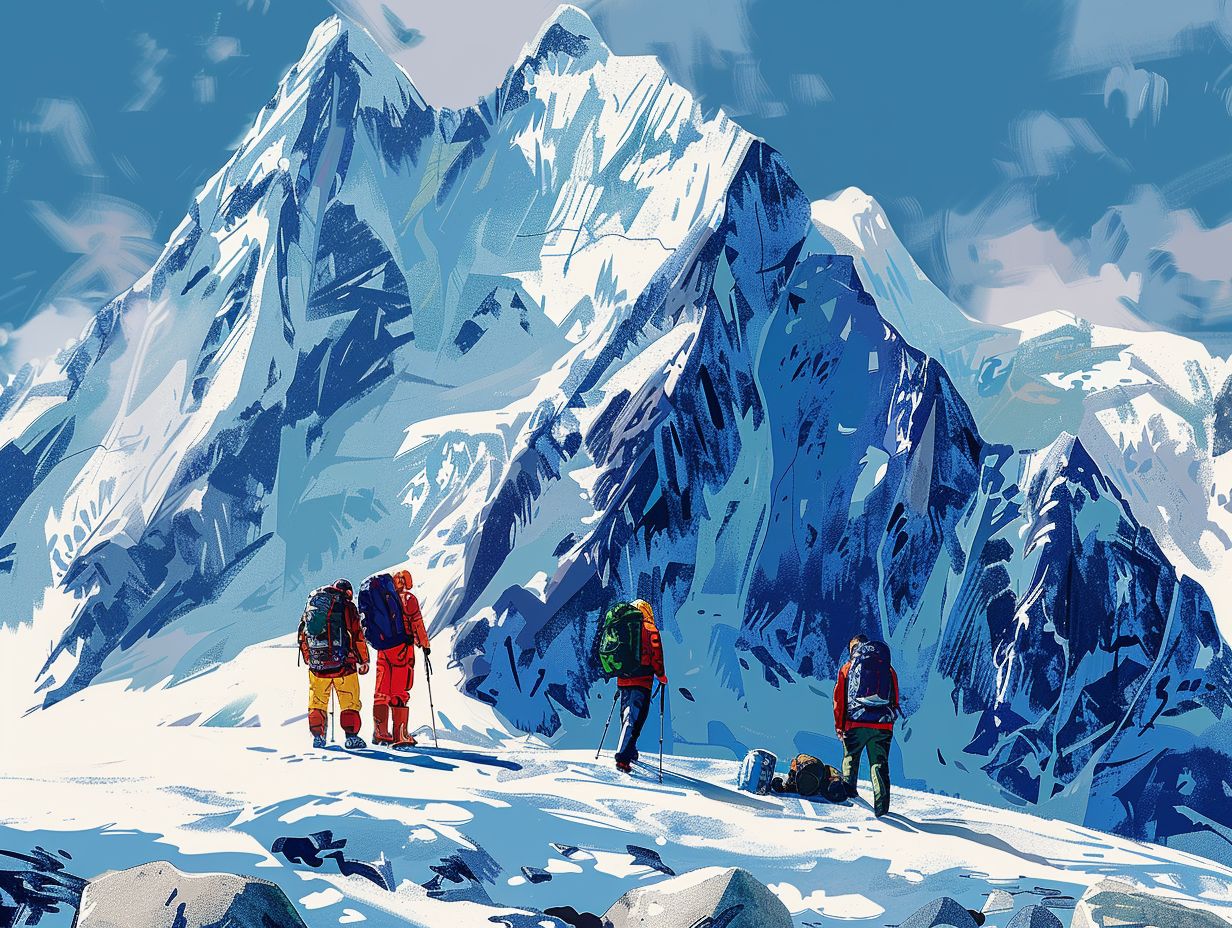
Have you ever dreamed of conquering Mount Kilimanjaro? In this comprehensive guide, we will explore everything you need to know to prepare for this epic adventure. From the best time to climb and physical requirements, to the different routes and gear needed, we’ve got you covered.
Discover the recommended fitness level, training plan, cost, safety measures, and what to expect when climbing Kilimanjaro. Stay tuned for valuable tips to make your journey to the summit a success!
Key Takeaways:

- The best time to climb Kilimanjaro is during the dry season, from June to October.
- A good fitness level is recommended, with a focus on cardiovascular and leg strength training.
- Proper gear, including essential clothing and equipment, is crucial for a successful and safe climb.
What is the Best Time to Climb Kilimanjaro?
When considering the best time to climb Kilimanjaro in Tanzania, it’s crucial to understand the seasonal variations that impact the mountain. The ideal months for a Kilimanjaro expedition typically fall within the dry seasons to optimize your experience.
Climbing during the dry months, usually from June to October and late December to March, offers clear skies, well-defined trails, and lower chances of encountering rain. This period provides excellent visibility, making it easier to enjoy the breathtaking scenery and wildlife sightings along the way.
It’s important to note that these popular months can also mean more crowded routes and campsites, reducing the sense of isolation and tranquility that many climbers seek in such a remote setting.
On the other hand, the wet season, especially in April and May, brings lush landscapes, fewer crowds, and lower temperatures, ideal for those looking for a more peaceful journey up the mountain.
What are the Physical Requirements for Climbing Kilimanjaro?
Before embarking on a Kilimanjaro climb, understanding the physical requirements is essential. The journey to the summit demands a combination of aerobic exercise, strength training, and high altitude acclimatization to ensure a safe and successful ascent.
To prepare for the physical challenges of climbing Kilimanjaro, hikers should focus on improving cardiovascular endurance through running, cycling, or hiking. Incorporating strength training exercises targeting the legs, core, and upper body will help build the necessary muscle strength for the trek.
Altitude acclimatization plays a crucial role in combating altitude sickness. Gradual ascents, staying hydrated, and listening to your body’s signals are key in avoiding altitude-related issues.
Proper gear, including sturdy hiking boots, warm clothing, and a well-fitted backpack, is essential for a comfortable journey. Training at higher altitudes where possible can also help prepare the body for the challenges it will face on the slopes of Kilimanjaro.
What is the Recommended Fitness Level?
The recommended fitness level for climbing Kilimanjaro involves a focused training regimen that combines cardiovascular exercises, strength training, and aerobic conditioning. Building endurance and muscle strength are crucial to tackle the high-altitude challenges of the ascent.
Cardiovascular exercises like running, hiking, or cycling are essential for improving heart and lung efficiency, preparing the body for sustained effort at high altitudes.
Strength training focusing on legs, core, and upper body helps climbers navigate steep inclines and carry backpacks comfortably on the trek.
Aerobic conditioning programs, such as interval training, help simulate the varying intensity of the trek, aiding in overall physical preparedness.
What are the Altitude Considerations?
Altitude considerations play a significant role in Kilimanjaro climbs due to the effects of high altitude on the body.
When climbing at high altitudes, the decrease in oxygen levels can lead to various symptoms of altitude sickness, such as headache, nausea, fatigue, and dizziness. To combat these issues, climbers need to acclimatize gradually by ascending slowly and incorporating rest days into their schedules. Hydration is key in assisting the body’s adaptation to lower oxygen levels.
Some climbers opt for supplemental oxygen tanks or altitude simulation gear to support their respiratory system during the ascent.
What are the Different Routes to Climb Kilimanjaro?
Exploring the various routes to climb Kilimanjaro offers adventurers a diverse range of experiences and challenges. From the scenic Lemosho route to the less-traveled Northern Circuit, each path presents unique landscapes and trekking opportunities.
The Lemosho route, known for its picturesque beauty, takes hikers through lush rainforests before opening up to stunning views of the Shira Plateau. On the other hand, the Machame route, often dubbed as the ‘Whiskey Route’, is famous for its challenging terrain and varied landscapes.
For those seeking a quieter trek, the Northern Circuit offers a longer journey that traverses multiple climatic zones, providing ample time to acclimatize.
Each route has its own allure, be it the breathtaking vistas along the Marangu route or the technical challenges of the Umbwe route. Understanding the characteristics of these paths is crucial in selecting the one that matches your skill level and preferences.
What are the Pros and Cons of Each Route?

Each Kilimanjaro climbing route offers distinct advantages and challenges based on factors like scenery, acclimatization opportunities, and traffic. Understanding the pros and cons of different routes can help climbers choose the most suitable path for their expedition.
For example, the Marangu Route, also known as the ‘Coca-Cola route’, is renowned for its huts and relative ease of access but can be crowded due to its popularity. On the other hand, the Lemosho Route provides stunning scenery and better acclimatization opportunities, albeit with longer trekking distances. Meanwhile, the Machame Route is celebrated for its scenic variety, but its high traffic levels might hamper the feeling of wilderness exploration.
What Gear and Equipment Do You Need for Climbing Kilimanjaro?
Preparing the right gear and equipment is crucial for a successful Kilimanjaro climb. Essential clothing items, proper footwear, and specialized gear like altitude simulation masks or oxygen tanks are vital for comfort and safety during the ascent.
In terms of clothing, layers are key. A moisture-wicking base layer to regulate temperature, coupled with a warm insulating layer and a waterproof shell, can protect against extreme weather conditions. In terms of footwear, sturdy and waterproof hiking boots with ankle support are a must to navigate the varied terrain.
Specialised such as altitude simulation devices and oxygen masks can help acclimatize to high altitudes and alleviate symptoms of altitude sickness. Safety equipment like helmets, harnesses, and crampons are also crucial for certain parts of the climb.
What Clothing is Essential for Climbing Kilimanjaro?
Selecting appropriate clothing for a Kilimanjaro climb is crucial to withstand the mountain’s varying temperatures and weather conditions. Layering options, moisture-wicking fabrics, and insulated outerwear are key components of a climber’s apparel.
Layering is fundamental as it allows you to adjust to temperature changes throughout the trek. Moisture-wicking fabrics like merino wool or synthetic blends help keep your skin dry and regulate body temperature.
Investing in weather-resistant gear such as a durable waterproof jacket and pants is essential to protect against rain and wind. High-quality hiking boots with good ankle support and proper socks to prevent blisters are a must for the demanding terrain of Kilimanjaro.
What Other Gear and Equipment Should You Bring?
Plus clothing, climbers should pack essential gear and equipment for a Kilimanjaro expedition. Items like trekking poles, headlamps, hydration systems, and medical supplies are crucial for comfort, safety, and preparedness during the ascent.
Alongside these primary items, carrying a fully-stocked first aid kit containing altitude sickness medication, blister treatment, and pain relievers is imperative in case of emergencies. A reliable GPS device or map, compass, and an emergency whistle should also be among the gear to navigate the varying terrains and signal for help if needed.
Investing in quality, waterproof gear such as backpack covers, rain jackets, and durable hiking boots is essential when facing unpredictable mountain weather conditions. Packing high-energy snacks, electrolyte tablets, and a water purification system will help sustain energy levels and ensure safe hydration throughout the climb.
What is the Cost of Climbing Kilimanjaro?
The cost of climbing Kilimanjaro varies based on factors like the chosen route, tour operator services, accommodation preferences, and additional amenities. Understanding the breakdown of expenses is crucial for budgeting and planning your Kilimanjaro expedition.
Finding affordable options can involve choosing less popular routes which might have lower park fees attached. Some tour operators offer package deals that include gear rental, meals, and transportation, simplifying the planning process and potentially reducing costs.
Comparing prices between different tour companies can also help you find the best value for your budget. Accommodation choices range from basic camping sites to luxury lodges, each affecting the overall expense of your climb. Considering these factors can help you tailor your climbing experience to your financial capabilities while still enjoying the adventure.
How to Train for Climbing Kilimanjaro?
Training for a Kilimanjaro climb requires a structured regimen focused on enhancing physical fitness, aerobic capacity, strength, and endurance. Developing a comprehensive training plan tailored to the demands of high-altitude expeditions is essential for climbers’ success.
Before embarking on a Kilimanjaro adventure, climbers should prioritize activities that boost cardiovascular fitness, such as running, cycling, and hiking to improve endurance levels.
Incorporating strength training exercises like squats, lunges, and push-ups into the routine enhances muscle strength necessary for overcoming steep terrains and carrying gear.
High-intensity interval training can simulate the various challenges faced on the climb, improving overall performance and adaptability to changing conditions. Climbing-specific workouts, alternating between aerobic and anaerobic activities, will better prepare climbers for the unique physical demands of the ascent.
What is the Recommended Training Plan?

A recommended training plan for Kilimanjaro climbing involves a balance of cardiovascular exercises, strength training, and altitude simulation routines to prepare the body for the physical challenges of high-altitude trekking. Consistency and progressive intensity are key aspects of an effective training program.
Begin your training plan by incorporating activities such as hiking, running, cycling, or stair climbing to boost cardiovascular endurance. These exercises help enhance lung capacity and oxygen utilization, vital for coping with the reduced oxygen levels at higher altitudes.
- Strength training exercises like squats, lunges, and core workouts are crucial for building the muscles needed for long uphill climbs on Kilimanjaro.
- Integrate altitude simulation routines using tools like altitude masks or training at higher elevations where possible to acclimatize the body to lower oxygen levels.
What Exercises Should You Focus On?
To enhance climbing skills and physical conditioning for Kilimanjaro ascents, climbers should focus on exercises that target cardiovascular endurance, leg strength, core stability, and high-altitude fitness. Incorporating hiking, outdoor activities, and climbing-specific workouts can maximize preparation effectiveness.
Cardiovascular training is crucial for Kilimanjaro climbers as it improves overall endurance and stamina, essential for summiting the peak. Engaging in activities like running, cycling, and stair climbing can elevate heart rate and prepare the body for sustained exertion at high altitudes.
Strengthening exercises such as squats, lunges, and calf raises help build lower body strength crucial for navigating challenging terrain. Focusing on core stability through planks, Russian twists, and mountain climbers enhances balance and reduces the risk of injuries during climbs.
What are the Safety Measures for Climbing Kilimanjaro?
Ensuring safety during a Kilimanjaro climb requires proactive measures to mitigate risks like altitude sickness, extreme weather conditions, and physical exertion. Adequate acclimatization, emergency preparedness, and adherence to safety protocols are fundamental for a secure and successful expedition.
One of the key strategies to prevent altitude sickness is to ascend gradually, allowing the body to acclimatize to lower oxygen levels. Climbers should also stay properly hydrated and maintain a slow, steady pace. In case of emergencies, it’s crucial to have a detailed emergency response plan in place, including communication procedures and evacuation protocols.
Risk mitigation involves careful planning and preparation, such as packing essential supplies like proper clothing, first aid kits, and high-energy snacks. Training in advance for the physical demands of the climb is vital to minimize the risk of injuries and exhaustion.
What is the Experience Like Climbing Kilimanjaro?
Embarking on a Kilimanjaro climb offers a transformative experience that combines breathtaking landscapes, challenging trekking routes, and the sense of accomplishment upon reaching the summit. The journey to Africa’s highest peak is a test of physical endurance, mental stamina, and appreciation for the natural beauty of the mountain.
The diverse ecosystems encountered during the ascent, from lush rainforests to alpine deserts, add layers of wonder and awe to the expedition. Each step taken up the rugged terrain brings you closer to the sky, as the air thins and the temperature drops.
Standing on Uhuru Peak, the highest point on Kilimanjaro, the panoramic views stretch out before you, a vast expanse of Africa below, painted in hues of sunrise or sunset.
Conclusion and Final Tips for Climbing Kilimanjaro
Embarking on a Kilimanjaro climb is a remarkable adventure that demands thorough preparation, physical conditioning, and mental resilience. Following safety guidelines, respecting the mountain environment, and embracing the challenges with a positive mindset can enhance your Kilimanjaro experience and lead to a successful summit bid.
As you prepare for your Kilimanjaro journey, remember that acclimatization is key to combating altitude sickness. Stay hydrated, pace yourself, and listen to your body’s signals throughout the climb. Pack essential items like proper clothing, sturdy hiking boots, and high-energy snacks to keep you going.
It’s crucial to choose a reputable guide service that prioritizes safety and has experienced guides familiar with the mountain. Envision your success, stay motivated, and be open to the breathtaking views and sense of achievement that Kilimanjaro offers at every step of the trek.
Frequently Asked Questions
How do I prepare for climbing Kilimanjaro?

To prepare for climbing Kilimanjaro, it is important to focus on physical and mental fitness. Start a regular exercise routine to improve your overall fitness level, including cardiovascular and strength training. Additionally, practice hiking and walking on uneven terrain to prepare for the challenging trails on Kilimanjaro. Mental preparation is also key, so set aside time for meditation or other relaxation techniques to help maintain a positive mindset during the climb.
What gear do I need for climbing Kilimanjaro?
The gear you need for climbing Kilimanjaro will depend on the route and time of year you plan to climb. Generally, you will need warm, waterproof clothing, a good pair of hiking boots, a daypack, sleeping bag, and trekking poles. It is also important to bring high-altitude gear such as a warm hat, gloves, and a quality sleeping bag rated for below freezing temperatures. Be sure to research the specific gear requirements for your chosen route.
How should I train for high altitude before climbing Kilimanjaro?
One of the most important aspects of preparing for a high-altitude climb like Kilimanjaro is acclimatization. This means allowing your body time to adjust to the higher altitude. To prepare, you can train at higher altitudes, such as by hiking at high elevations or using an altitude training mask. It is also recommended to gradually increase your elevation during your training hikes to help your body adjust.
What are the physical challenges of climbing Kilimanjaro?
Climbing Kilimanjaro is a physically demanding endeavor that requires endurance, strength, and agility. The trek takes you through varied terrain, including steep inclines, rocky paths, and slippery trails. The high altitude also adds to the physical challenge, as the air is thinner and can cause symptoms such as shortness of breath and fatigue. It is important to train and prepare your body for these challenges before attempting the climb.
How should I prepare for the weather while climbing Kilimanjaro?
The weather on Kilimanjaro can be unpredictable and extreme, with temperatures varying greatly depending on the altitude and time of year. To prepare, make sure you have the appropriate clothing and gear for all types of weather, including rain, snow, and extreme cold. It is also important to stay hydrated and well-nourished to combat any potential effects of altitude sickness.
What is the best time of year to climb Kilimanjaro?
The best time of year to climb Kilimanjaro is during the dry seasons, which are typically January-March and June-October. This is when the weather is most stable and the trails are less muddy and slippery. However, keep in mind that Kilimanjaro can be climbed year-round, so choose the time that works best for your schedule and abilities.